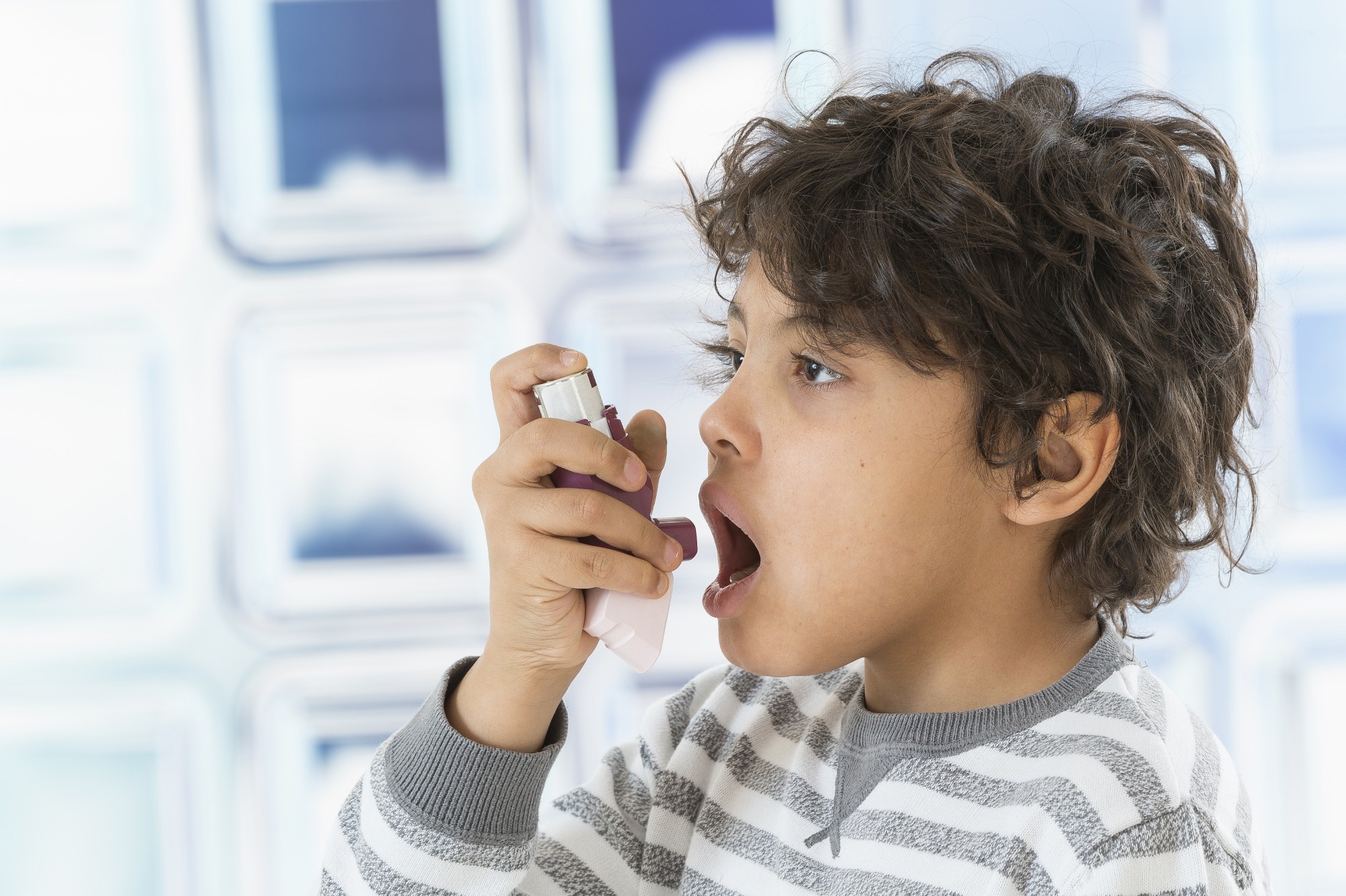In a recent study published in the Journal of Allergy and Clinical Immunology, researchers assessed the impact of prenatal exposure to air pollution on immune perturbations.
There is evidence that long-term exposure to air pollution in early life adversely affects children’s respiratory health and increases asthma risk in childhood. Additionally, associations have been observed between particulate matter having diameters less than 2.5 and less than 10 µm (PM2.5 and PM10) as well as nitrogen dioxide (NO2) with respiratory diseases in individuals aged between four and seven years. The mechanisms involved in these associations are, however, still unclear.
 Study: Prenatal exposure to ambient air pollution associates with early life immune perturbations. Image Credit: JPC-PROD / Shutterstock
Study: Prenatal exposure to ambient air pollution associates with early life immune perturbations. Image Credit: JPC-PROD / Shutterstock
About the study
In the present study, researchers investigated the potential mechanisms involved in the manifestation of allergy and asthma in childhood due to prenatal exposure to air pollution.
The COPSAC2010 cohort study involves a prospective mother-child cohort of 700 children born to women living in Zealand, Denmark, with enrolment beginning in week 24 of pregnancy. During pregnancy, the trial comprised randomized interventions with high-dose vitamin D and fish oil.
The team linked the COPSAC-derived data with individual-level maternal and child home address history recorded from conception to the most recent follow-up day, including moving, emigration, immigration, and death dates. This data was obtained using the unique personal identification numbers assigned by the Danish Civil Registration System. Ambient PM2.5, PM10, and NO2 concentrations were modeled at each residential address. The Operational Street Pollution Model (OSPM®) was used to calculate the local impact of traffic at the street level.
Furthermore, the contribution of long-distance transport and regional background as a result of non-local sources was computed. The team estimated the time-weighted mean for each participant from conception to birth (prenatal exposure), from birth to the deoxyribonucleic acid methylation (DNAm) sampling point (total postnatal exposure), and in the year preceding the sampling point at age six. In addition, the researchers estimated three short-term exposure characteristics: the first four weeks of life (postnatal first four weeks), the initial six months of life (postnatal first six months), and the month before the age six-year sample point.
To measure airway immune mediators, nasal mucosal lining fluid samples were obtained using a synthetic absorptive matrix at four weeks and six years of age. At six months, inflammatory markers in the blood were measured with high-sensitivity immunoassays, which were based on electrochemiluminescence. In addition, DNA methylation and gene expression were measured in the respiratory epithelium at six years.
Results
The prenatal mean (IQR) values for ambient NO2 were 18.8 ug/m3, PM25 was 10.1 ug/m3, and PM10 was 15.3 ug/m3. Significant positive connections existed between the pollutants, especially between prenatal exposure to PM10 and PM25. The relationships between birth urbanicity and prenatal exposure to PM10, PM25, and NO2 were low and moderate. At six years old, 22.4% of children had asthma at some point in their lives, 23.7% were sensitized to inhalant allergens, 7.4% had asthma at the time, and 6.7% had allergic rhinitis.
With elevated levels of interleukin-8 (IL-8) and decreased levels of IL-1 across all air pollution components, prenatal exposure to air pollution exposure was significantly correlated to systemic inflammatory markers found in blood at the age of six months. Furthermore, elevated NO2 exposure was associated with decreased levels of IL-6. After accounting for urbanicity, these correlations mainly remained unaltered. Prenatal air pollution’s early-life systemic immunological “fingerprint” was strongly linked to an elevated risk of asthma at age six, but not allergic sensitization or rhinitis.
Nose mucosal immune mediators at age six were not significantly correlated with prenatal air pollution exposure. After multiple testing was taken into account, there were also no conclusive links between postnatal air pollution exposure and immune mediator levels at six. This finding was also consistent when the exposure window was limited to the year before the age of six was sampled.
In nasal epithelial cells in six-year-old subjects, the team found correlations between prenatal exposure to air pollution and gene expression. Notably, following a false discovery rate (FDR) 5% adjustment, higher prenatal NO2 exposure resulted in increased expression of AKAP9. Using an FDR of 15%, it was observed that exposure to more PM2.5 was linked to higher expression of CCL2 and lower expression of RP11-420K14. On the other hand, prenatal PM10 exposure was linked to lower expression of LINC00644 and RP11-420K14. The postnatal air pollution exposure, the four-week nasal mucosal immune mediator fingerprint, and gene expression did not show any significant relationships.
Although the direction of the association had increased OR with increased exposure across all disease endpoints, with the exception of allergic rhinitis and PM, there were no statistically significant direct correlations between prenatal exposure to air pollution and asthma and allergy endpoints at age six years. However, after postnatal air pollution exposure was taken into account, the team found a nominally significant correlation between NO2 and allergy sensitization.
Overall, the study findings highlighted a link between prenatal exposure to ambient air pollution, specifically NO2, PM2.5, and PM10, and the early life immunological profile of the airways, which was associated with the later emergence of allergic airway disease.
Journal reference:
- Tingskov Pedersen C-E, Eliasen AU, Ketzel M, Brandt J, Loft S, Frohn LM, Khan J, Brix S, Rasmussen MA, Stokholm J, Morin A, Ober C, Bisgaard H, Pedersen M, Bønnelykke K, Prenatal exposure to ambient air pollution associates with early life immune perturbations, Journal of Allergy and Clinical Immunology (2022), DOI: https://doi.org/10.1016/j.jaci.2022.08.020, https://www.sciencedirect.com/science/article/pii/S0091674922011691

 PARENTING TIPS
PARENTING TIPS







 PREGNANCY
PREGNANCY








 BABY CARE
BABY CARE








 TODDLERS
TODDLERS








 TEENS
TEENS








 HEALTH CARE
HEALTH CARE








 ACTIVITIES & CRAFTS
ACTIVITIES & CRAFTS








 CONTACT
CONTACT ABOUT
ABOUT

